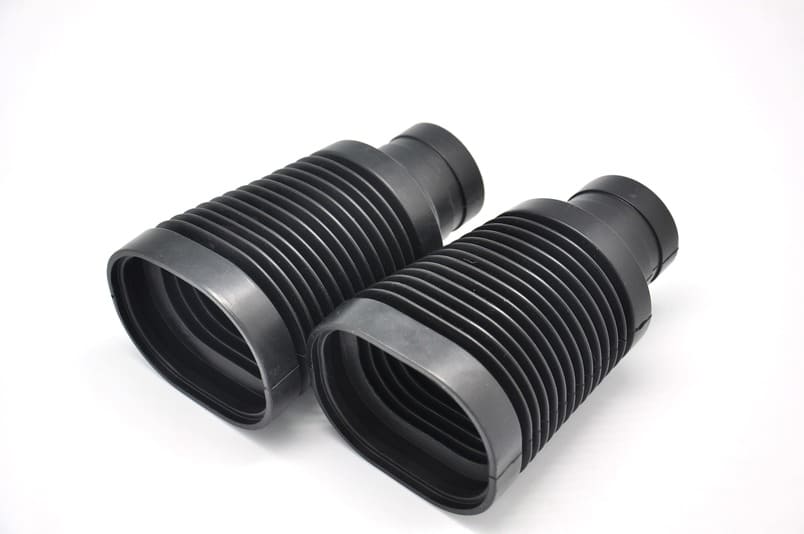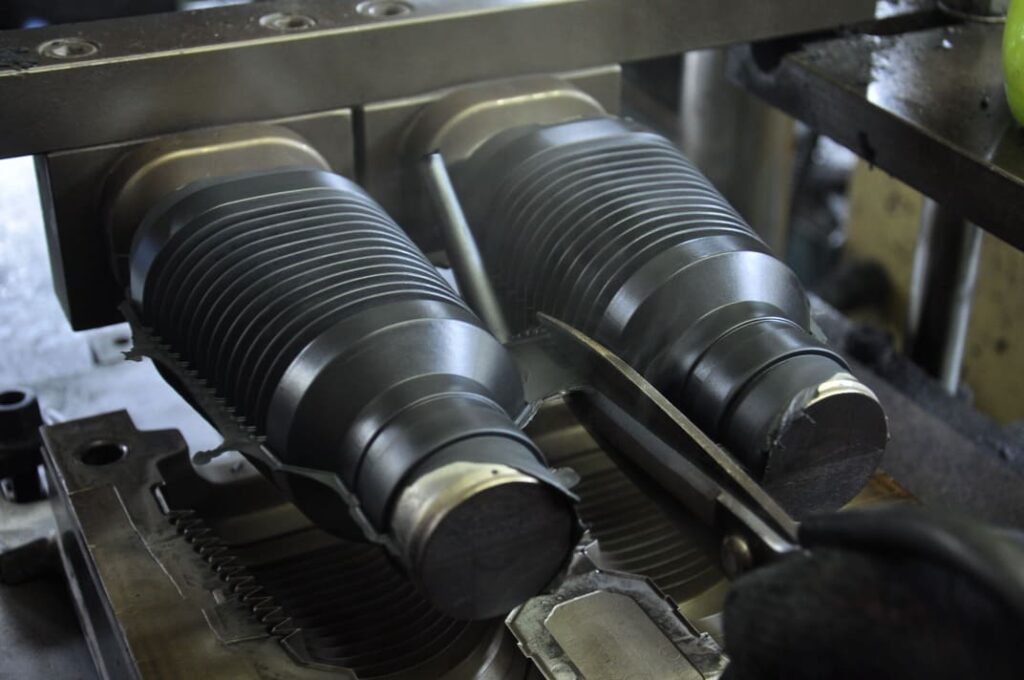Ever wondered what goes into making EPDM (Ethylene Propylene Diene Monomer) rubber? EPDM is a popular synthetic elastomer known for its excellent weather resistance, durability, and flexibility. But what exactly is the formulation behind this versatile rubber?
The formulation of EPDM rubber consists primarily of ethylene, propylene, and a small amount of a diene monomer. The diene is crucial for creating cross-links during the curing process, allowing the rubber to have the properties required for various demanding applications.

Let’s explore the key components of EPDM rubber and how they contribute to its performance and durability.
What Are the Chemicals in EPDM?
EPDM rubber is primarily made from three key chemicals: ethylene1, propylene, and a diene monomer.
1. Ethylene – Ethylene is the main component of EPDM, providing the material with good flexibility and low-temperature performance.
2. Propylene – Propylene gives the rubber its resistance to heat, ozone, and weathering, enhancing its performance in outdoor applications.
3. Diene Monomer – The diene (often a small amount of a conjugated diene such as ethylidene norbornene or 1,4-hexadiene) enables the cross-linking process that makes the rubber strong and durable during vulcanization2.
Role of Key Ingredients ✅
| Ingredient | Role in EPDM Rubber | Effect on Rubber Properties |
|---|---|---|
| Ethylene | Main base component | Enhances flexibility and low-temperature performance |
| Propylene | Adds chemical resistance | Improves heat, ozone, and UV resistance |
| Diene Monomer | Enables cross-linking during curing | Provides strength and durability |
These components work together to create EPDM’s exceptional properties, such as resistance to UV rays, ozone, and weather, making it suitable for outdoor applications.
What Plasticizer Is Used for EPDM Rubber?
Plasticizers are added to EPDM rubber to improve its processability and flexibility.
Common plasticizers used in EPDM rubber include phthalates, adipates, and benzoates. These plasticizers are incorporated to make the rubber easier to mold and shape during the manufacturing process, while also enhancing its flexibility and handling properties.
Types of Plasticizers Used in EPDM ✅
| Plasticizer Type | Purpose | Effect on EPDM Properties |
|---|---|---|
| Phthalates | Increase flexibility | Improves ease of processing |
| Adipates | Enhance processability | Increases flexibility |
| Benzoates | Improve flexibility and stability | Enhances low-temperature flexibility |
These plasticizers3 allow EPDM to be processed into various forms, such as gaskets, seals, and hoses, while maintaining its weather-resistant properties.
How Is EPDM Rubber Cured?
EPDM rubber is cured through a process called vulcanization, where sulphur or other curing agents are added to the rubber compound.
During vulcanization, the diene monomer reacts with the sulphur or curing agents, forming cross-links between the polymer chains. This process gives the rubber its final properties, including improved strength, elasticity, and durability. The degree of cross-linking can be adjusted depending on the required properties of the final product.

Vulcanization in EPDM4 ✅
| Curing Agent | Effect on EPDM Properties |
|---|---|
| Sulphur | Forms cross-links between polymer chains, enhancing strength and elasticity |
| Peroxides | Alternative curing agents that provide heat resistance and chemical stability |
The vulcanization process5 transforms EPDM from a soft, moldable material into a strong, durable rubber that can be used in a wide range of applications.
What Is EPDM Not Compatible With?
While EPDM has excellent resistance to many environmental factors, there are certain substances it is not compatible with.
EPDM is not resistant to certain oils, fuels, and solvents. It is also vulnerable to degradation when exposed to aromatic hydrocarbons, such as toluene and benzene. EPDM should also be avoided in environments where it may come into contact with chlorinated oils or certain types of mineral oils, as these substances can cause it to degrade.
EPDM Compatibility Chart ✅
| Substance | Compatibility with EPDM |
|---|---|
| Oils (vegetable, mineral) | Poor |
| Fuels | Poor |
| Aromatic Hydrocarbons | Poor |
| Chlorinated Oils | Poor |
| Water | Excellent |
| Ozone | Excellent |
EPDM’s resistance to heat, ozone, and UV rays makes it an excellent choice for outdoor and automotive applications, but it has limitations when exposed to certain chemicals.
What Additives Are Used in EPDM Formulation?
In addition to the basic ingredients of ethylene, propylene, and diene, EPDM formulations include various additives to enhance performance and processing.
Additives such as fillers, plasticizers, antioxidants, and stabilizers are used to improve the rubber’s properties. For example, carbon black may be added to enhance UV resistance, while antioxidants prevent degradation from exposure to oxygen and ozone.
Common Additives in EPDM ✅
| Additive | Purpose |
|---|---|
| Carbon Black | Improves UV resistance and strength |
| Plasticizers | Enhances processing and flexibility |
| Antioxidants | Prevents degradation from oxygen and ozone |
| Stearic Acid | Acts as a processing aid and release agent |
These additives ensure that EPDM performs well in harsh environments, such as outdoor and automotive applications.
What Are the Applications of EPDM Rubber?
EPDM rubber’s formulation gives it excellent weather resistance, which makes it ideal for various outdoor and industrial applications.
EPDM is commonly used in roofing membranes, automotive seals, gaskets, and electrical cable insulation. Its resistance to ozone, UV radiation, and extreme temperatures allows it to maintain its properties in challenging conditions.

EPDM Rubber Applications ✅
| Industry | Application |
|---|---|
| Automotive | Seals, gaskets, weatherstripping |
| Construction | Roofing membranes, window seals |
| Electrical | Cable insulation, connectors |
| Industrial | Vibration dampers, industrial hoses |
EPDM is favored in industries where weathering, durability, and chemical resistance are critical.
How Does EPDM Compare to Other Types of Rubber?
EPDM is just one type of synthetic rubber, but it stands out due to its excellent performance in outdoor and weather-resistant applications.
Compared to other rubbers, such as nitrile or neoprene, EPDM offers superior resistance to heat, ozone, and UV rays, but it may not perform as well in oil-resistant applications. It is also less resistant to certain chemicals compared to specialized rubbers like fluorocarbon or nitrile rubber.
EPDM vs Other Rubber Types ✅
| Rubber Type | Key Strengths | Weaknesses |
|---|---|---|
| EPDM | Excellent weather resistance, UV and ozone resistance | Not ideal for oil or fuel exposure |
| Nitrile (NBR) | Excellent oil and fuel resistance | Poor weathering resistance |
| Neoprene | Good chemical and weather resistance | Lower elasticity than EPDM |
EPDM’s unique balance of properties makes it the material of choice for specific applications, such as automotive seals and roofing materials.
Conclusion
The formulation of EPDM rubber consists primarily of ethylene, propylene, and a diene monomer. This combination of ingredients gives EPDM its unique properties, such as excellent weather resistance, flexibility, and durability. Additives such as carbon black, antioxidants, and plasticizers further enhance the rubber’s performance in demanding environments. EPDM’s versatility makes it a popular choice for a wide range of applications, including automotive seals, roofing, and electrical insulation.
🚀 Need Custom EPDM Rubber Solutions for Your Industry?
Contact Julong Rubber today or Request a Custom Quote for high-quality EPDM rubber products tailored to your specific needs!
Understanding ethylene's role can enhance your knowledge of EPDM's flexibility and performance in various applications. ↩
Exploring vulcanization will provide insights into how EPDM achieves its strength and durability, crucial for its applications. ↩
Learning about plasticizers will help you understand how they improve EPDM's flexibility and processing, essential for manufacturing. ↩
Explore this link to understand the unique properties and diverse applications of EPDM rubber in various industries. ↩
Learn about the vulcanization process and its significant impact on rubber properties, enhancing strength and durability. ↩






